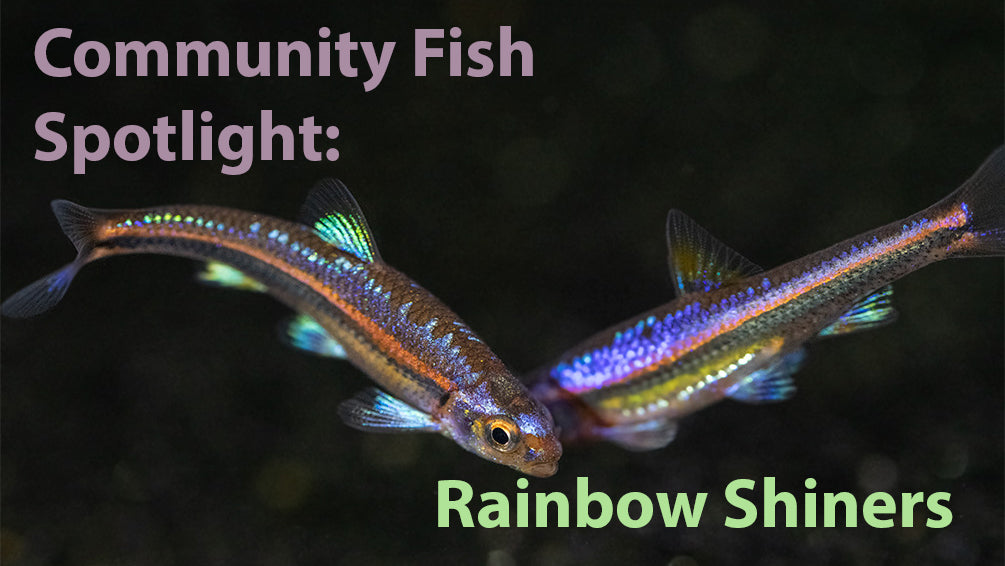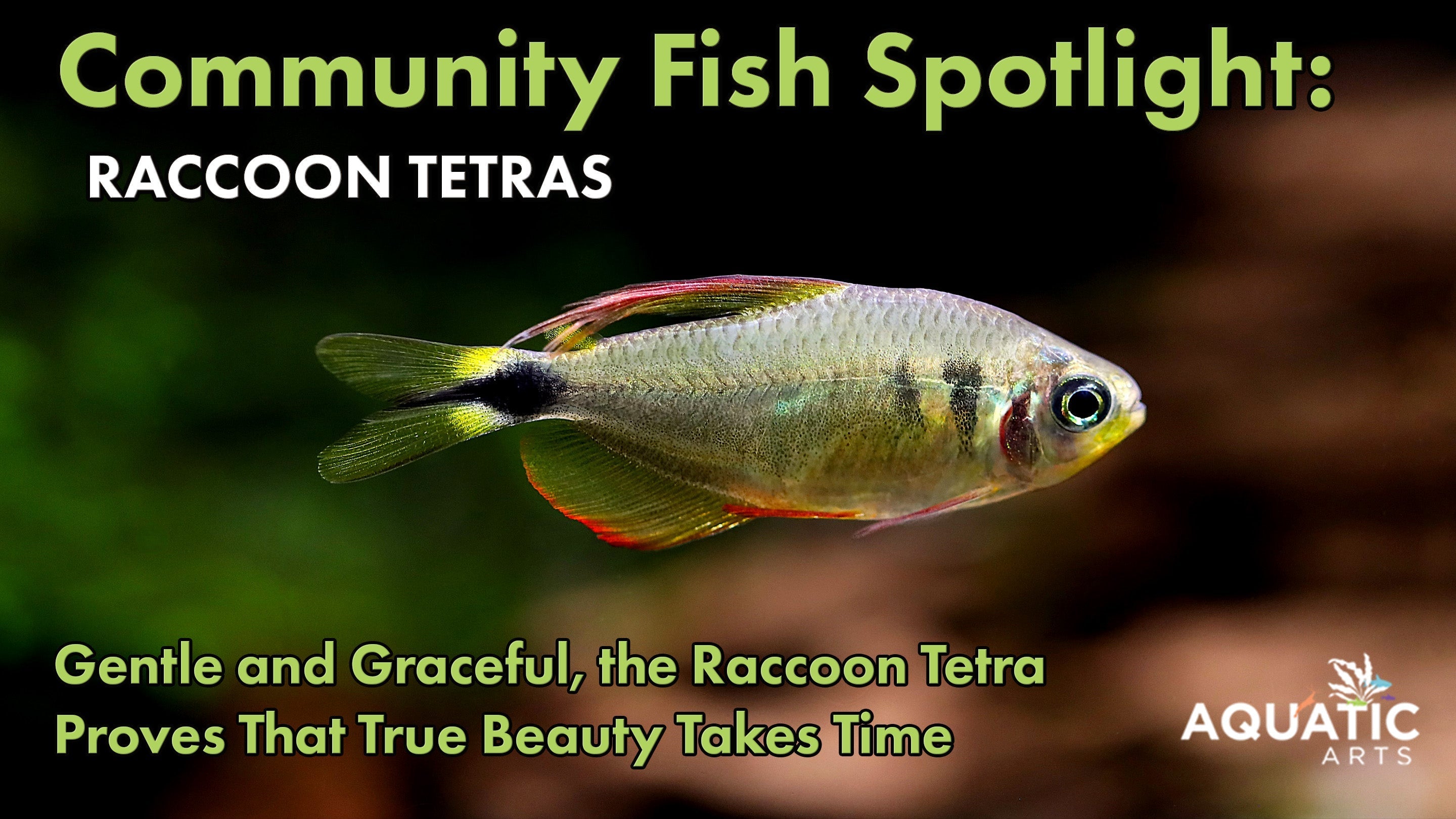Community Fish Featured Spotlight: Rainbow Shiner (Notropsis chrosomus)

In the colorful realm of community aquariums, one fish that stands out for its vibrant hues and lively demeanor is the Rainbow Shiner (Notropsis chrosomus). With its striking appearance and peaceful nature, this freshwater fish has become a beloved choice among aquarists seeking to add a splash of color to their tanks. Let's delve into what makes the Rainbow Shiner a captivating addition to any community aquarium.
Origins and Habitat: Where do Rainbow Shiners Live?
The Rainbow Shiner is native to the southeastern United States, particularly found in the clear, fast-moving streams and rivers of the Tennessee and Cumberland River drainages. These habitats typically feature rocky bottoms with plenty of vegetation and overhead cover. In the wild, Rainbow Shiners are known for their schooling behavior, often found in large groups near the surface of the water.
Physical Characteristics:
True to its name, the Rainbow Shiner boasts a kaleidoscope of colors that make it a standout in any aquarium. Its slender body is adorned with iridescent scales that shimmer with hues ranging from metallic blues and greens to flashes of red and orange along its sides. The fins of the Rainbow Shiner are typically translucent, adding to its ethereal appearance. Adult specimens can reach lengths of up to three inches (7.5 cm), making them a relatively small but visually striking species.

Seasonal Color Changes: Rainbow Shiners may undergo seasonal color changes, intensifying or dulling their hues based on factors like breeding season or environmental conditions. During spawning, males may exhibit brighter colors to attract females, while their colors may fade slightly during periods of rest or stress.
Tank Requirements:
Creating an ideal environment for Rainbow Shiners in captivity involves replicating aspects of their natural habitat. A spacious aquarium with ample swimming room is essential, as these fish are active and appreciate plenty of space to roam. Opt for a tank with a minimum capacity of 20 gallons to accommodate a small group of Rainbow Shiners comfortably.
Provide a substrate of fine gravel or sand along with plenty of live plants, driftwood, and rock formations to mimic the rocky streambeds they inhabit in the wild. Additionally, ensure good water flow and filtration to maintain pristine water conditions. Rainbow Shiners prefer slightly cooler water temperatures ranging from 64°F to 72°F (18°C to 22°C), so a reliable aquarium heater and thermometer are recommended to regulate temperature fluctuations.

Temperature Sensitivity: While Rainbow Shiners prefer slightly cooler water temperatures, they are also sensitive to rapid fluctuations in temperature. Sudden changes can stress the fish and compromise their health. It's crucial to maintain stable water conditions to ensure the well-being of these colorful inhabitants.
Behavior and Compatibility:
One of the most endearing traits of Rainbow Shiners is their peaceful demeanor, making them excellent community fish. They thrive in the company of their own kind and other non-aggressive species that share similar water requirements. However, avoid housing them with larger or more aggressive tankmates that may intimidate or outcompete them for food.
Given their schooling nature, it's advisable to keep Rainbow Shiners in groups of at least six individuals to promote natural behavior and reduce stress. Watching these fish dart and shimmer together in unison adds a captivating dynamic to any aquarium setting.
Diet: What do Rainbow Shiners Eat?
In the wild, Rainbow Shiners are omnivorous, feeding on a varied diet of algae, small invertebrates, and plant matter. In captivity, they readily accept high-quality flake or pellet foods formulated for tropical fish. Supplement their diet with occasional offerings of live or frozen foods such as bloodworms, brine shrimp, and daphnia to provide essential nutrients and promote optimal health and coloration.
Breeding: Can Rainbow Shiners be bred in an aquarium?
Breeding Rainbow Shiners in captivity can be challenging due to their specific habitat and environmental requirements. To encourage spawning, simulate the conditions of their natural habitat by providing a cooler temperature drop, increased water flow, and plenty of hiding places among dense vegetation. Females typically scatter their adhesive eggs over substrate and plants, where they are fertilized by males. If successful, the eggs will hatch within a few days, yielding tiny fry that require infusoria or finely powdered foods for their initial growth stages.
Q&A Section: Rainbow Shiner FAQs
1. Are Rainbow Shiners suitable for beginner aquarists?
Rainbow Shiners can be suitable for beginner aquarists who have some experience in maintaining freshwater aquariums. While they are relatively hardy and adaptable, they do require specific water conditions and may be more challenging to breed compared to some other beginner-friendly species. With proper research and care, beginners can successfully keep Rainbow Shiners in their aquariums.
2. Can Rainbow Shiners be kept with other fish species?
Yes, Rainbow Shiners are peaceful community fish and can be kept with other non-aggressive species that share similar water requirements. It's best to avoid housing them with larger or more aggressive tankmates that may intimidate or outcompete them for food. Additionally, Rainbow Shiners thrive in the company of their own kind and should ideally be kept in groups of six or more individuals.
3. How can I encourage Rainbow Shiners to breed in my aquarium?
Breeding Rainbow Shiners in captivity can be challenging but is possible with the right conditions. To encourage spawning, simulate aspects of their natural habitat by providing a cooler temperature drop, increased water flow, and plenty of hiding places among dense vegetation. It's also beneficial to keep a ratio of males to females and provide optimal water quality to support successful reproduction. Patience and dedication are key when attempting to breed Rainbow Shiners in the aquarium setting.
4. Are Rainbow Shiners prone to any specific diseases?
Rainbow Shiners are generally hardy fish when provided with proper care and a suitable environment. However, like any aquarium fish, they may be susceptible to common freshwater diseases such as ich (white spot disease), fin rot, and fungal infections. Regular water changes, maintaining good water quality, and avoiding stressors can help prevent disease outbreaks. Quarantining new fish before introducing them to the main aquarium can also minimize the risk of introducing pathogens. If any signs of illness are observed, prompt treatment with appropriate medications is essential to ensure the health and well-being of Rainbow Shiners.
With its dazzling colors, peaceful demeanor, and active personality, the Rainbow Shiner undoubtedly earns its place as a prized addition to community aquariums. Whether you're a novice hobbyist or a seasoned aquarist, this captivating species is sure to bring joy and vibrancy to any aquatic setup. By providing a well-maintained environment, compatible tankmates, and a varied diet, you can enjoy the beauty and charm of Rainbow Shiners for years to come.




